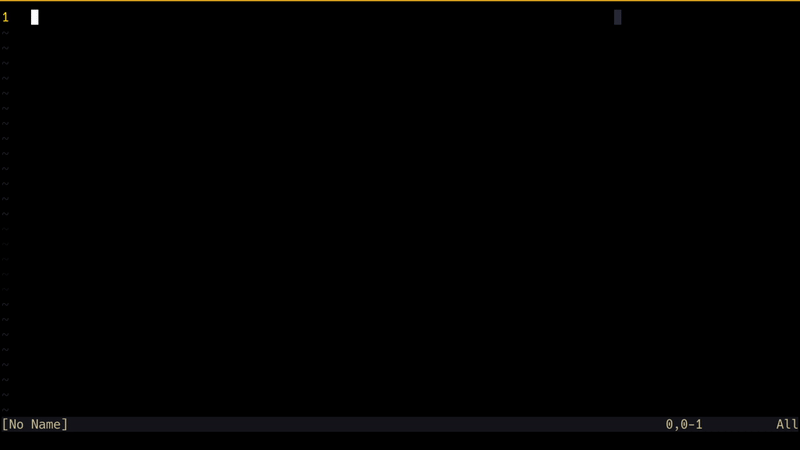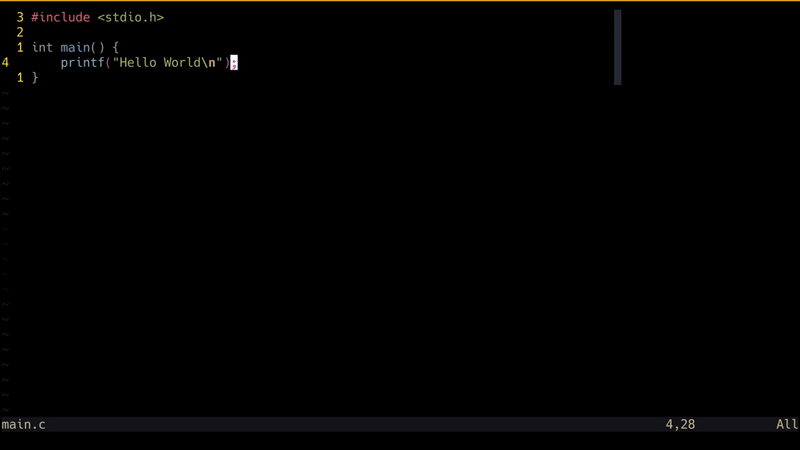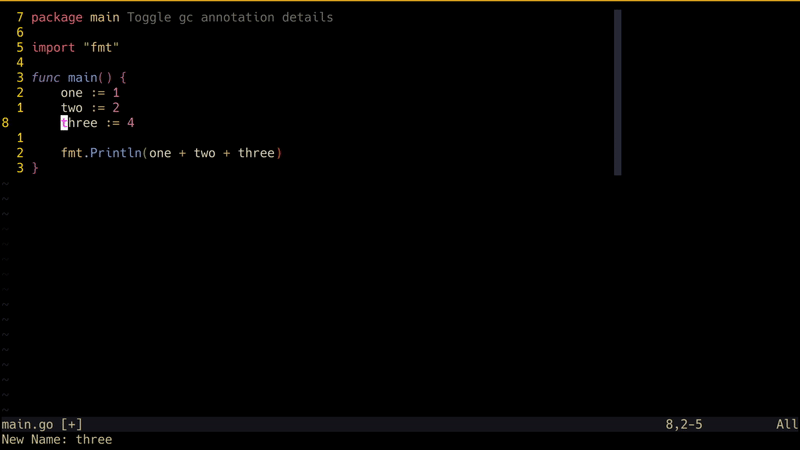on
Vim's Missing Feature Isn't Really Missing
Since it’s near the end of 2023, I am sure everyone is quite busy with family and other festive obligations. I am going to keep this one short and introduce you to one Vim feature that, if you don’t use it already, will have you excited to get back to your beloved editor in 2024.
An Addiction

If you are anything like me, then Vim is so deeply ingrained in you that you
find yourself accidentally typing :w or its friends in all sorts of text
inputs. Vim motions have taken over your brain to the point that you find it
difficult to type in “traditional” text inputs. Perhaps your Vim addiction is so
bad that you have Vi mode configured everywhere you can.
You feel like a well-oiled machine, navigating your browser, your file system,
and even editing commands in your shell using Vim motions. However, when you hit
: to enter your beloved Vim’s
Command-line-mode and want to follow
up with something more than w or q, something feels off. You make a typo or
forget a flag, and there it is. Your fingers seek awkwardly for the arrow keys,
you’re reaching for your backspace, and every time you inadvertently hit escape,
it’s game over.
Command-line Window
The so-called,
Command-line-window
(:h command-line-window) is one of the less talked-about Vim features, and one
that I personally discovered sometime ago by pure chance.
It is a special window in Vim that allows you to edit text for command-line
operations in the same way you edit text normally in Vim. This allows you to
circumvent the awkwardness of searching for arrow keys or using backspace,
allowing you to use the Vim motions you are so comfortable with, in even more
contexts. Additionally, the command-line-window is also populated with your
command or search history from previous operations, allowing you to modify a
recently run command or search using Vim motions. Another advantage of using
command-line-window is that you can also hook into your non-native
autocompletion suggestions for command-line operations.
The command-line-window can be accessed in several ways:
q:: Openscommand-line-windowpopulated with your recentExcommandsq/orq?: Openscommand-line-windowpopulated with your recent searches. Hitting enter executes a search using the/or?behaviour.CTRL+f: Brings up thecommand-line-windowwhen you are already incommand-line-mode.
In Action
Here are some interesting ways you can integrate command-line-window into your
Vim workflow. Keep in mind that these are toy examples intended to seed ideas as
to how you may use command-line-window in more complex circumstances.
Command History

Command-line-window is activated using q:. The last :h command is then
modified using Vim motions and reissued with Enter.
Search History

Command-line-window is activated using q/. A previous search term is then
modified using Vim motions and reissued with Enter.
Filter Command

Command-line-window is activated using CTRL+f while already in
Command-line-mode. This is then used to insert a missing flag into our
filter command using Vim motions.
LSP Rename

Command-line-window is activated using CTRL+f after Neovim’s
vim.lsp.buf.rename is triggered. Now we can access our recent history of
renames and also use Vim motions to pick a new name for the variable.
Netrw

Command-line-window is
activated using CTRL+f after the rename command on a directory inside netrw
is issued. The file can now be conveniently renamed using Vim motions.
Happy Vim-ing in 2024
The potential use cases for command-line-window go well beyond these simple
examples. Nonetheless, I hope this was a useful introduction to a feature that
bridges a gap that was always missing (and, frankly, irritating) for me in Vim.
This post is dedicated to the late Bram Moolenaar, who passed away in August 2023. Bram was the creator and BDFL of Vim. Vim is licensed as “charityware” and as conveyed by the call to “Help poor children in Uganda!” in Vim’s welcome message, Bram encouraged users to donate to the ICCF Holland charity he founded. If your end-of-year bonus has you feeling generous, I encourage you to spread the wealth to those who are less fortunate than people like us, people who spend an obnoxious amount of time obsessing over text editors.
Happy new year!